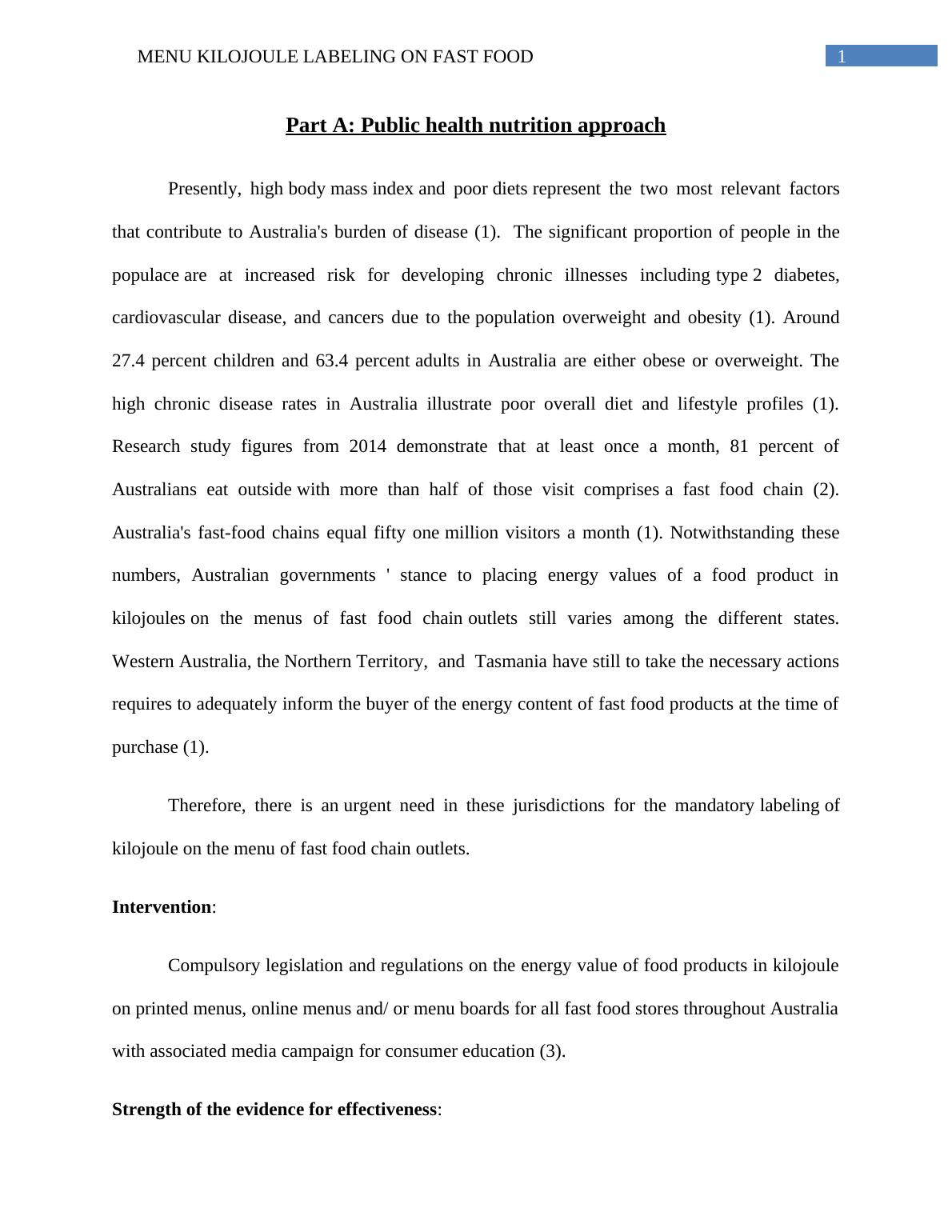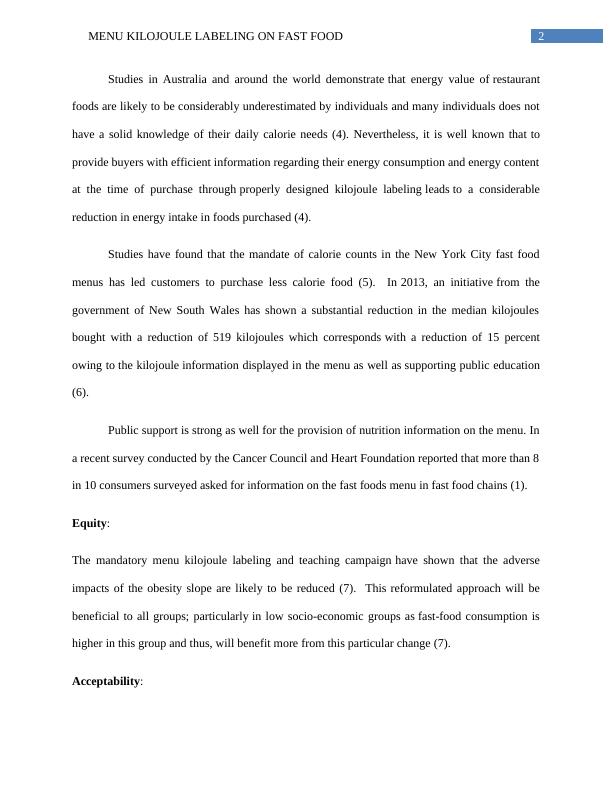Menu Kilojoule Labeling on Fast Food
Added on 2023-04-21
8 Pages1751 Words420 Views
End of preview
Want to access all the pages? Upload your documents or become a member.
Heathcare Assignment And Australian Culture
|6
|1316
|15
Obesity in Cranbourne Community: Lifestyle Factors and Global Burden of Disease
|7
|563
|187
Health Policy Brief on Reducing Sugar-Sweetened Beverage Consumption in Australia
|16
|3930
|1
Public Health - Obesity | Assignment
|13
|4052
|49
Dietary Sources of Energy, Solid Fats, and Added Sugars Among Children and Adolescents in the United States
|14
|7454
|323
The Impact of Obesity on the Young Australian Population
|10
|2411
|122


